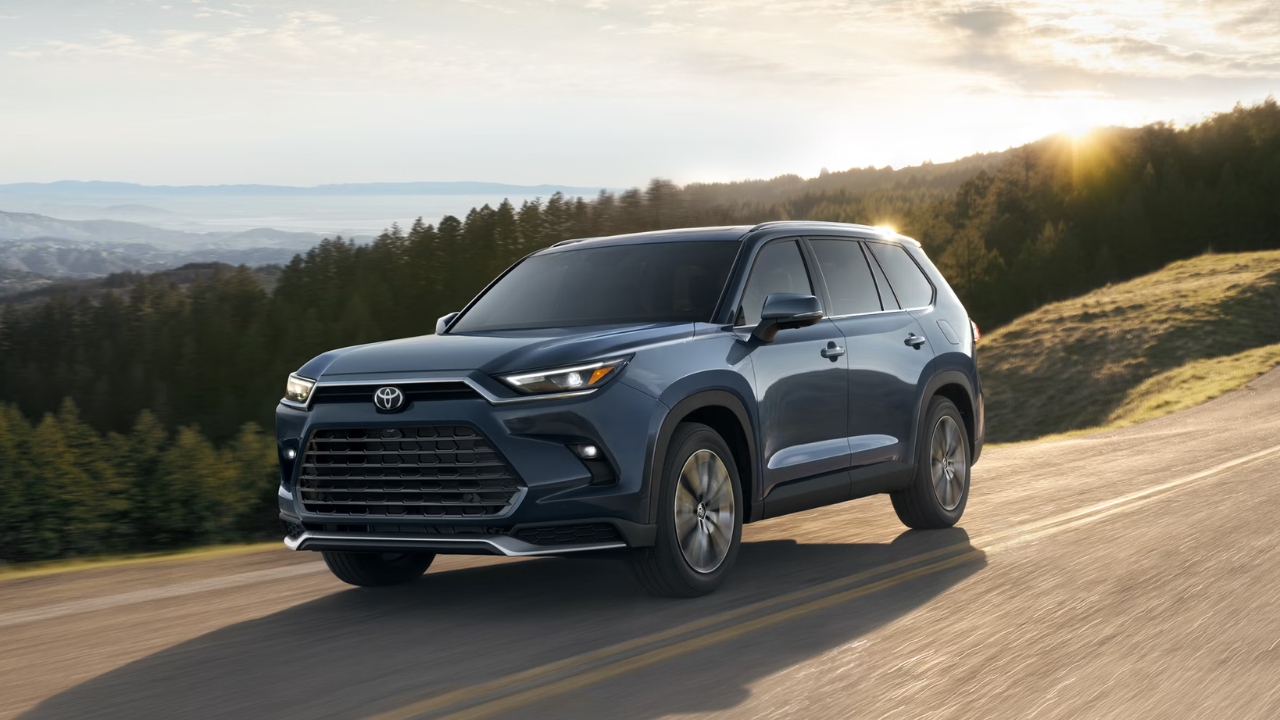Toyota Grand Highlander Hybrid
Image Credit: Toyota
When you look at today’s SUV market, you no longer have to sacrifice efficiency for space. Modern hybrid technology has changed what you expect from family vehicles—offering room, comfort, and real-world fuel savings without compromising capability. Nowhere is this shift clearer than in Toyota’s three-row offering, which has become a standout in Car road test evaluations thanks to its balance of size, usability, and hybrid performance.
Why the Grand Highlander Hybrid Stands Out
Toyota designed the 2026 Grand Highlander Hybrid to fix what earlier models struggled with: genuine space for adults across all three rows. Instead of squeezing seating into a midsize frame, this model expands cabin volume, improves packaging, and focuses on practical layouts that make long trips easier for families.
Beyond its dimensions, Toyota’s hybrid experience shapes its appeal. Two distinct hybrid systems allow you to tailor performance—one prioritizing maximum economy and the other delivering more power for towing or confident highway driving. This flexibility is a major advantage during any vehicle review or hybrid performance review.
Two Hybrid Powertrains for Different Needs
Toyota offers the Grand Highlander with:
- A 2.5-liter hybrid system designed for exceptional efficiency and reliable everyday use.
- A 2.4-liter turbocharged Hybrid MAX setup, offering stronger acceleration and higher towing limits.
Both are available with all-wheel drive, and both deliver the steady, predictable power responses you expect in a performance test or driving impressions evaluation. Families towing small trailers may appreciate the Hybrid MAX, while commuters may prefer the fuel economy test results of the 2.5-liter variant.
Space That Works for Families
Previous Toyota models like the standard Highlander offered solid usability, but the Grand Highlander broadens the cabin experience significantly. Adult-sized seating in all three rows makes a meaningful difference in long-distance comfort, while the expanded cargo area improves flexibility.
Whether you’re testing how the New SUV handles city driving and long trips or measuring practicality in a full Car road test, the Grand Highlander Hybrid performs consistently. From school runs to weekend travel, the layout supports everything families typically need—strollers, sports gear, luggage, and more.
Everyday Practicality
With up to 97.5 cubic feet of usable cargo space when rows are folded and generous room for up to eight passengers, the Grand Highlander Hybrid positions itself as one of the most versatile Japanese SUVs available. The interior design helps reduce clutter with smart storage solutions, a large infotainment display, and multiple connectivity options.
Its hybrid systems also support a predictable driving rhythm. The fuel economy test numbers land around the mid-30s mpg range, allowing drivers to cover long distances with fewer stops and a lower operational cost.
Powertrain Flexibility Explained
Even with three powertrains available—including the non-hybrid 2.4-liter turbo—the hybrid versions provide the best mix of cost efficiency and capability. For example, towing capacity with the turbo model reaches 5,000 pounds, but the Hybrid MAX and 2.5-liter hybrid still deliver excellent ride quality and impressive range.
If your priority is fuel savings, the hybrid lineup is the most appealing. If towing and frequent highway climbs matter more, the turbocharged option may strike a balanced compromise.
Japanese hybrid SUVs
Image Credit: Toyota
How It Compares
Competitors like the Kia Sorento Hybrid offer affordability and efficiency, but they fall short in adult-sized third-row space, storage flexibility, and overall capability. In a fuel economy test for daily commute or a handling evaluation, the Toyota feels more refined and more aligned with long-term family needs.
Where some SUVs lean toward sportiness or maximize cost savings, the Grand Highlander Hybrid’s strength is balance. You get comfort, usable space, and hybrid efficiency in a package that avoids extremes.
Interior Space Matters
The cabin provides up to 153 cubic feet of passenger room, matching or surpassing many rivals. Even when compared with larger competitors such as the Hyundai Palisade, the Toyota model maintains strong seating comfort and well-calibrated ergonomics.
This intelligent packaging results in a better blend of space and drivability—especially noticeable during handling or ride quality assessments. The Grand Highlander feels substantial yet predictable, avoiding the bulkiness sometimes associated with large three-row SUVs.
Real-World Usability
Daily driving highlights the SUV’s strengths. Smooth ride quality, predictable steering, low cabin noise, and fuel-sipping hybrid power all contribute to a practical family experience. During long-trip evaluations or real-world range tests, the hybrid powertrains show their capability by delivering stable efficiency and consistent performance.
Standard safety tech—including Toyota Safety Sense—adds peace of mind. Advanced driver-assist features strengthen its role as a dependable family vehicle without complicating the driving experience.
Conclusion
If practicality, comfort, and efficiency rank high on your priority list, the 2026 Toyota Grand Highlander Hybrid is one of the most balanced Japanese SUVs you can choose right now. It doesn’t chase extremes—instead, it delivers steady performance, dependable hybrid range, and thoughtful interior space. For families seeking a spacious, efficient, and well-rounded three-row model, it remains one of the most convincing options on the market today.


